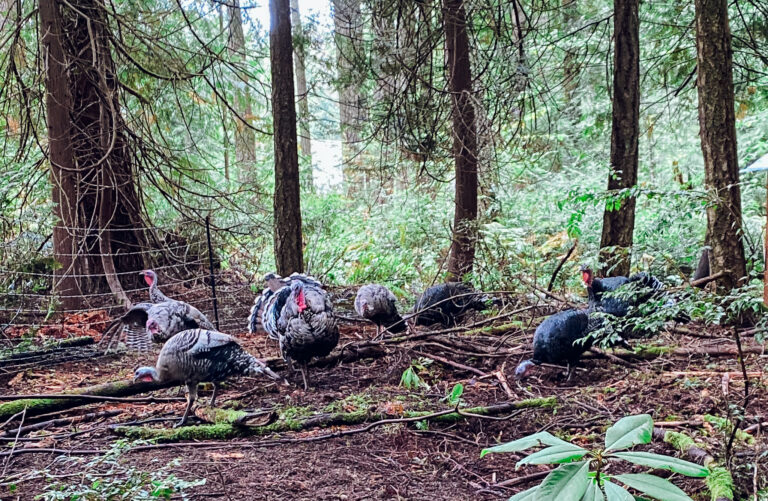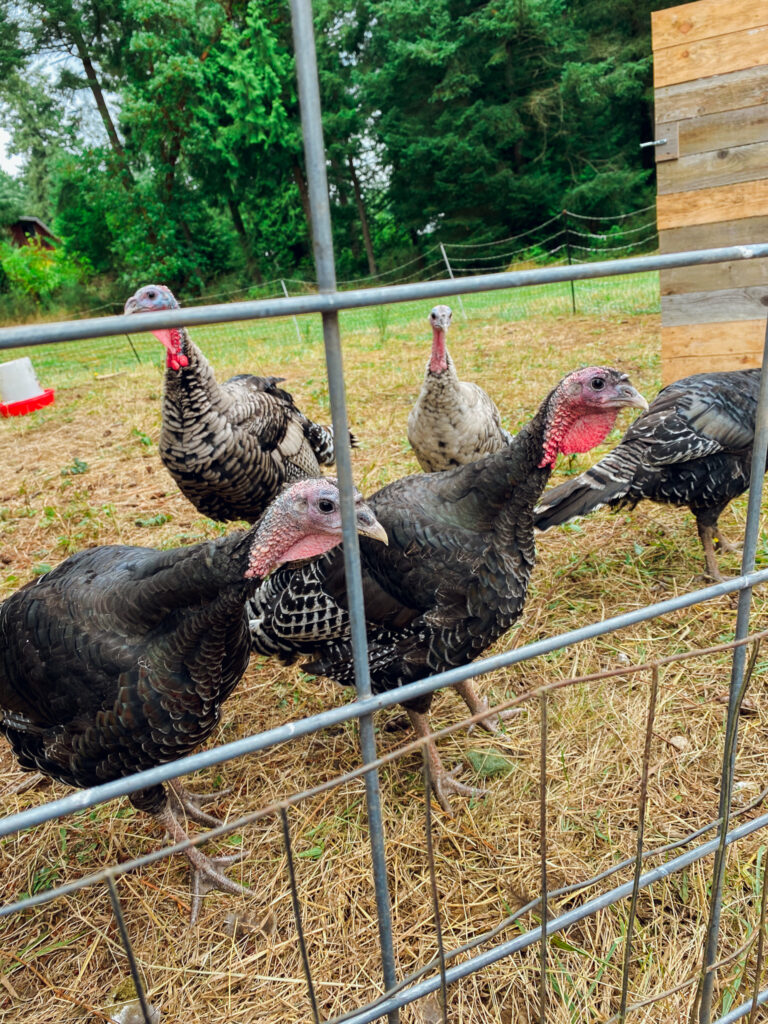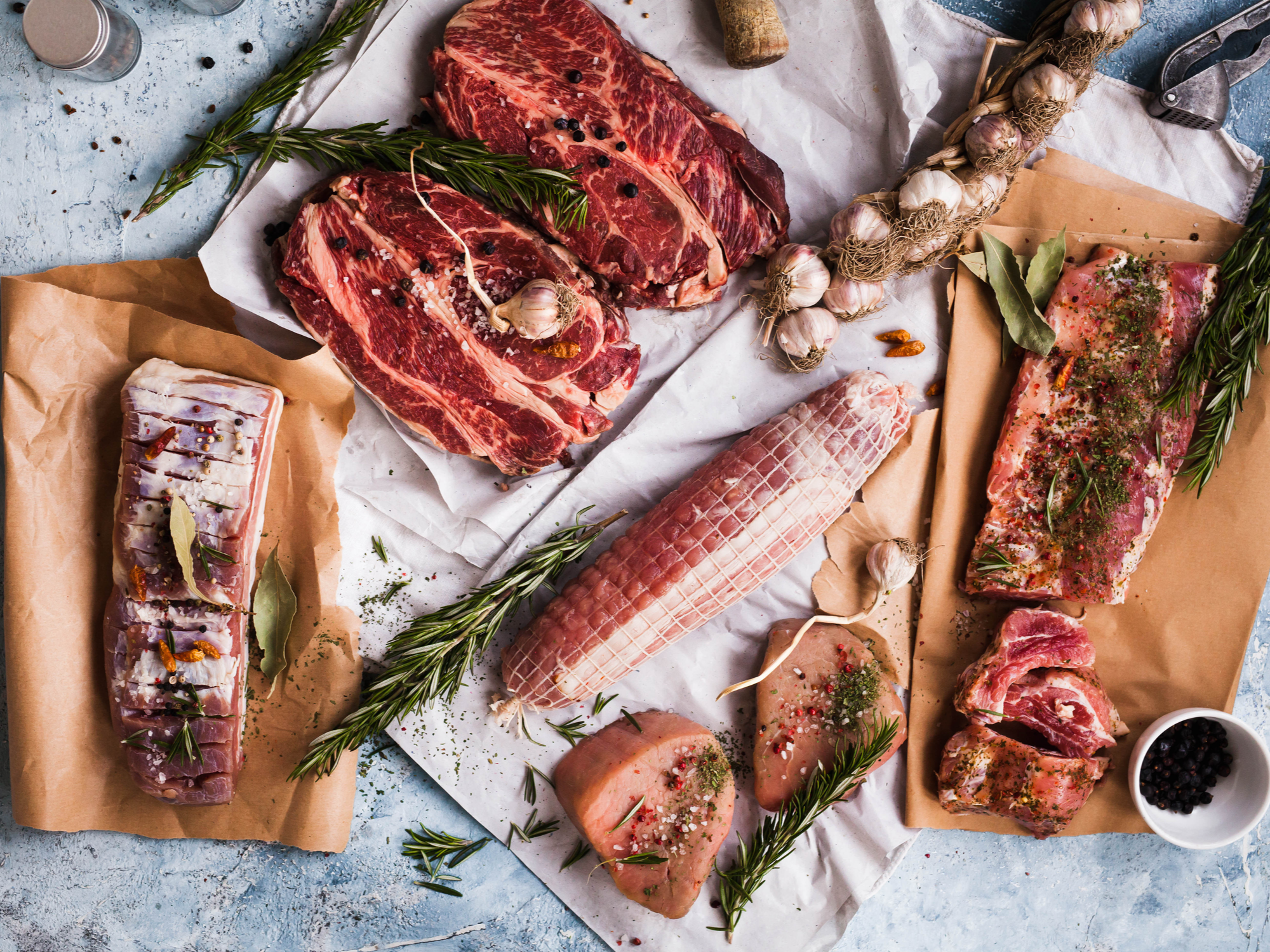

Raising turkeys is my second favorite operation on the homestead (after pigs, of course)! When deliberating on raising turkeys first you must decide between heritage or broad-breasted. Heritage turkeys can be really appealing! They can produce their own eggs, they have a delicious rich meat taste, and they don’t grow so big they die. Broad breasted turkeys on the other hand grow out in approximately 4 months at 15-25 lbs. You can even get them bigger if you choose.

We have chosen to raise both. Broad-breasted turkeys really are fun to raise. They are friendly, goofy, and are a relatively easy project. Our heritage type are Narragansetts and they provide their own set of challenges but are also fun to raise. Heritage-type turkeys will lay their own eggs and can brood their own clutch. We have eggs under our broody chicken right now!!! We are still waiting on the turkey hens to sit on their own eggs…
The first “house” your turkeys need is a brooder. We use a large wooden box with a heat lamp, feed, and water. They are much more flighty than chickens and they can fly (or flutter) within a few short weeks. So make sure you have a cover on the brooder. I think of brooding them more like quail. They sleep on their sides often which makes you think all of your birds are dead, giving you a heart attack. Make sure the temp in the brooder is right (95-100 degrees in the first week) or they will overheat under the lamp. Marbles in the water can help prevent drowning as well.
We use “magic water” as suggested by Justin Rhodes, for all of our chicks, it is:
Turkeys need HIGH protein food (28-30%) to get started. We get a turkey starter from our local feed mill that is 28% protein. Most feed stores carry some form of a turkey, pheasant, or gamebird starter that fits these needs.

The first few days, as with any new chicks, are the most critical. As stated previously make sure the temp in the brooder is set right, and they have 24/7 access to food and water. After the first week, you can begin cooling the brooder by about 5 degrees per week. They feather out at 6-8 weeks and may need a heat lamp just at night if it is especially cool. *Note: if it is hot in your area at the time of brooding you may actually need to cool the brooder and drastically reduce heat lamps, they are equally susceptible to heat as they are cold temps. I use a small clip-on desk fan in the brooders during the heat of the summer.
We built a moveable turkey house so that our turkeys could be out on a rotational pasture system. They did a great job in the woods where the pigs had been pastured to continue the clean-up effort. We used a premier1 net fence to keep them in the areas we wanted them. The big issue we had though, was that heritage turkeys fly. The Narragansetts would not stay in the net fence and they taught the broad-breasted how to get out as well (we previously raised them in a net fence with no issue). See pic below of them on top of the pig house. So for this year, our Narragansetts are in a dog kennel with a cover and our broad-breasted turkeys will be separated from them.



So often I hear that people are afraid of raising turkeys because “they are dumb”, “they drown in the rain”, “they drown in their water”, etc. While they are unique and not like chickens, with a little extra care and attention they can be really fun and a really rewarding experience. They are also a great option for the working homesteader. They do not require a lot of hands-on care once they are out in the pasture, and therefore one of the easiest ways to get meat in your freezer. If I had to choose between turkeys and meat chickens I would choose turkeys.
Placing your very own home-raised turkey on the Holiday table is the best feeling ever. Even more rewarding is the taste of that bird. Keep following for more information on how to build your own turkey house, and hopefully some turkey egg hatching.




No spam, notifications only about current blog updates.
One Response
Hello,
I was the lucky recipient of 4 of your farm raised chickens! They have been delicious!
I’m wondering if you have any Heritage turkeys for sale?
I would like 2 depending on the cost.
Thank you